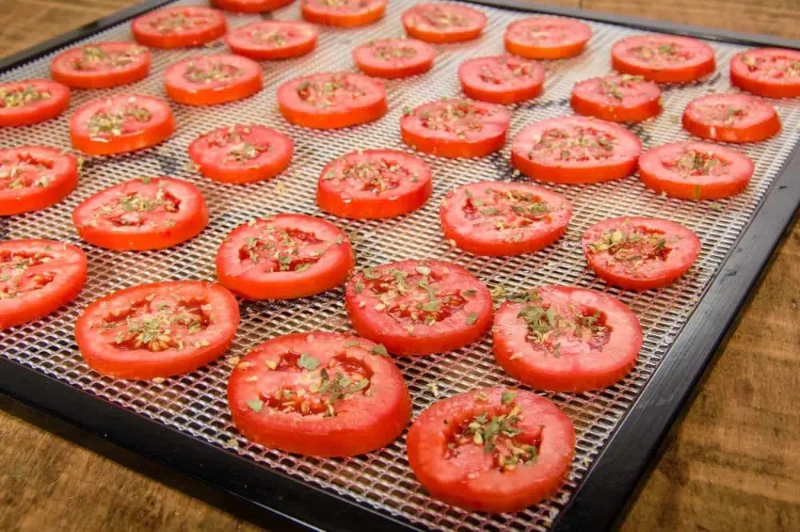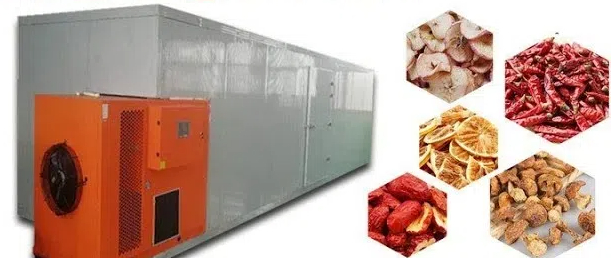
Content Menu
● Understanding Food Dehydration
>> Benefits of Using a Food Dehydrator
● What Can You Put in a Food Dehydrator?
>> Fruits
>> Vegetables
>> Herbs
>> Meats
>> Nuts and Seeds
>> Grains
● Tips for Successful Dehydration
● Creative Uses for Dehydrated Foods
>> Soups and Stews
>> Trail Mixes
>> Smoothies
>> Baking Ingredients
>> Homemade Snacks
● Conclusion
● FAQ
>> 1. What types of fruits can I dehydrate?
>> 2. Do I need to blanch vegetables before dehydrating them?
>> 3. Can I dehydrate meat safely at home?
>> 4. How should I store my dehydrated foods?
>> 5. Can I use my oven instead of a food dehydrator?
● Citations:
Food dehydrators are versatile kitchen appliances that allow you to preserve a wide variety of foods by removing moisture. This process not only extends the shelf life of food but also concentrates flavors, making dehydrated foods a delicious and nutritious option for snacking or cooking. In this article, we will explore what you can put in a food dehydrator, the benefits of using one, tips for successful dehydration, and much more.

Understanding Food Dehydration
Food dehydration is an ancient preservation method that involves removing moisture from food to inhibit the growth of bacteria, yeast, and mold. The process retains most of the food's nutrients while enhancing its flavor and texture.
Benefits of Using a Food Dehydrator
- Extended Shelf Life: Dehydrated foods can last for months or even years when stored properly.
- Nutritional Retention: Dehydration preserves vitamins and minerals better than some other preservation methods.
- Flavor Concentration: Removing moisture intensifies the natural flavors of fruits, vegetables, and meats.
- Cost-Effective: Buying in bulk and dehydrating your own foods can save money in the long run.
What Can You Put in a Food Dehydrator?
A food dehydrator can handle a wide range of foods. Here's a comprehensive list:
Fruits
Fruits are one of the most popular items to dehydrate. They make for healthy snacks and can be added to various dishes.
- Apples: Sliced apples turn into chewy snacks. Sprinkle with cinnamon for extra flavor.
- Bananas: Banana chips are a favorite; they can be sliced or pureed into fruit leather.
- Berries: Strawberries, blueberries, and raspberries retain their nutrients while becoming sweet and tangy.
- Pineapple: Dried pineapple is sweet and tropical, perfect for snacking or adding to trail mixes.
Vegetables
Dehydrating vegetables is an excellent way to preserve them for soups, stews, or snacks.
- Tomatoes: Sun-dried tomatoes add rich flavor to dishes.
- Carrots: Dried carrots are great for soups and stews.
- Bell Peppers: These can be rehydrated for use in various recipes.
- Zucchini: Sliced zucchini chips are a healthy alternative to potato chips.

Herbs
Herbs can be easily dehydrated to create your own spice blends.
- Basil: Dried basil is perfect for Italian dishes.
- Oregano: Great for seasoning meats and sauces.
- Thyme: Adds depth to many recipes.
Meats
Dehydrating meats requires careful preparation but results in delicious jerky.
- Beef Jerky: Marinate beef strips before dehydrating for flavorful jerky.
- Turkey Jerky: A leaner alternative that's equally tasty.
- Fish: Salmon or tuna can also be dehydrated but require proper handling.
Nuts and Seeds
While nuts and seeds don't require dehydration, they can be flavored and dried for unique snacks.
- Almonds: Seasoned almonds can be dehydrated for a crunchy snack.
- Pumpkin Seeds: Flavored pumpkin seeds make an excellent topping for salads.
Grains
Some grains can also be prepared in a dehydrator.
- Rice: Pre-cooked rice can be dried for use in camping meals.
- Quinoa: Similar to rice, it can be cooked and then dehydrated.
Tips for Successful Dehydration
1. Preparation is Key: Wash, peel, slice, or chop your food as necessary before placing it in the dehydrator.
2. Uniform Sizing: Cut food into uniform sizes to ensure even drying. Using sharp knives or a mandolin can be very helpful in this case.
3. Blanching Vegetables: Some vegetables benefit from blanching before dehydration to preserve color and nutrients. For example, blanching carrots or broccoli helps maintain their vibrant colors while also softening them slightly before drying.
4. Temperature Settings: Different foods require different temperatures; refer to your dehydrator's manual for guidelines. Generally:
- Fruits should be dried at around 135°F (57°C).
- Vegetables typically require about 125°F (52°C).
- Meats need higher temperatures, around 160°F (71°C).
5. Storage After Drying: Store dried foods in airtight containers away from light and moisture to maximize shelf life. Glass jars or vacuum-sealed bags work well for long-term storage.
6. Conditioning Dried Foods: After drying, let your food sit at room temperature in its storage container for several days. This allows any remaining moisture to equalize throughout the batch, helping prevent spoilage later on.
7. Rotate Trays Regularly: If your dehydrator has multiple trays, rotate them every few hours during the drying process. This ensures even drying since some areas may dry faster than others due to airflow differences within the unit.
8. Avoid Mixing Strong Flavors: When dehydrating different types of food together, avoid mixing strong flavors (like onions with fruits) as they may transfer their flavors during the dehydration process.
9. Monitor Drying Progress: Check on your food periodically during the drying process. This allows you to assess whether it's drying evenly and make adjustments if necessary.
10. Experiment with Recipes: Don't hesitate to try out various recipes using your dehydrated foods! From soups to snacks, there are countless ways to incorporate them into your meals.
Creative Uses for Dehydrated Foods
Dehydrated foods are not just limited to snacking; they can also enhance your cooking repertoire:
Soups and Stews
You can create hearty soups by adding dried vegetables like carrots, peas, or potatoes directly into boiling water or broth. They rehydrate quickly and add nutrition without requiring fresh produce each time you cook.
Trail Mixes
Combine dried fruits, nuts, seeds, and even chocolate chips for a nutritious trail mix perfect for hiking or snacking on-the-go.
Smoothies
Add dried fruits like bananas or strawberries directly into your smoothies for added sweetness without the need for fresh fruit.
Baking Ingredients
Incorporate dried fruits into muffins or bread recipes. Dried cranberries or apricots add flavor while providing natural sweetness.
Homemade Snacks
Create your own fruit leathers by pureeing fruits like apples or peaches and spreading them onto trays before dehydrating them until chewy yet pliable.
Conclusion
Food dehydrators offer an excellent way to preserve a variety of foods while enhancing their flavors. From fruits and vegetables to meats and herbs, there are countless options available. By following proper preparation techniques and storage methods, you can enjoy nutritious snacks year-round. Whether you're looking to save money or simply enjoy homemade treats, investing in a food dehydrator is worthwhile.
With creativity and experimentation in the kitchen using these techniques and ideas presented here today, you'll find that your food dehydrator becomes an essential tool in your culinary arsenal!

FAQ
1. What types of fruits can I dehydrate?
You can dehydrate a wide variety of fruits including apples, bananas, berries, pineapples, peaches, mangoes, strawberries, oranges, lemons, limes, cantaloupes, grapes, pears, apricots, watermelon—and many more!
2. Do I need to blanch vegetables before dehydrating them?
Blanching is recommended for some vegetables as it helps preserve color, texture, and nutrients during the drying process. For example:
- Carrots should be blanched briefly before dehydration.
- Broccoli should also be blanched to maintain its vibrant green color.
3. Can I dehydrate meat safely at home?
Yes! However, it's crucial to marinate the meat properly and ensure it reaches safe temperatures during the dehydration process (at least 160°F/71°C) to prevent foodborne illnesses like salmonella or E.coli contamination.
4. How should I store my dehydrated foods?
Store dehydrated foods in airtight containers in a cool dark place away from moisture—glass jars work well! Vacuum sealing is also an excellent option if you want extended shelf life; just ensure that they're completely dry before sealing!
5. Can I use my oven instead of a food dehydrator?
While you can use an oven on low settings (around 140°F/60°C) as an alternative method for dehydration purposes; however it may not provide as consistent results compared with dedicated machines designed specifically for this purpose due primarily because they lack proper airflow control which is essential when removing moisture effectively without cooking food instead!
Citations:
[1] https://www.campkitchen.ca/blog/dehydrating-basics
[2] https://www.youtube.com/watch?v=lEUA2t2XD5M
[3] https://www.backpackingchef.com/dehydrating-food.html
[4] https://slowerhiking.com/food/adapt-your-favourite-recipes
[5] https://www.osbheatpump.com/news/how-to-use-a-food-dehydrator-10-useful-tips-for-beginners-and-advanced-users/
[6] https://www.thepurposefulpantry.com/essential-dehydrated-foods-for-the-pantry/
[7] https://www.backpackingchef.com/food-dehydrator-recipes.html
[8] https://www.freshoffthegrid.com/dehydrating-food/
[9] https://www.foodie.com/1398031/foods-should-dehydrate-list/
[10] https://learn.eartheasy.com/guides/a-beginners-guide-to-dehydrating-food/
[11] https://homesteadingfamily.com/preservation-101-intro-to-dehydrating-food/
[12] https://www.breville.com/content/breville/us/en/blog/cooking/how-to-use-a-dehydrator/_jcr_content/root/container_741553154/container/image.coreimg.85.1200.jpeg/1718622778417/how-to-use-dehydrator.jpeg?sa=X&ved=2ahUKEwjEyeuUjeqKAxXRUkEAHaLQIYcQ_B16BAgEEAI
[13] https://fooddrinklife.com/best-foods-to-deydrate/
[14] https://www.youtube.com/watch?v=rR2G5UO-5Ms
[15] https://www.allrecipes.com/article/how-to-use-a-food-dehydrator/
[16] https://www.youtube.com/playlist?list=PL6ygl2lNPriODiu2XahnHHUhj6mEObz0P
[17] https://www.youtube.com/watch?v=rXNIHzcE8F0
[18] https://www.youtube.com/watch?v=7wB8g22taqo











